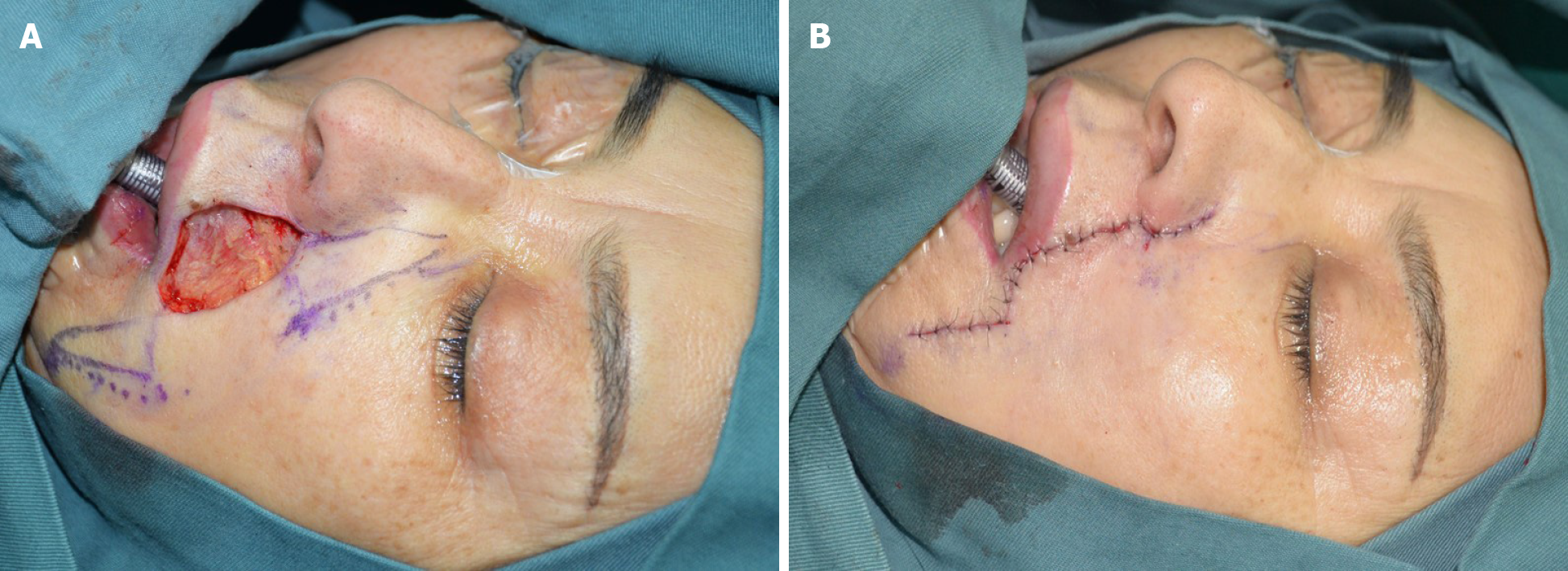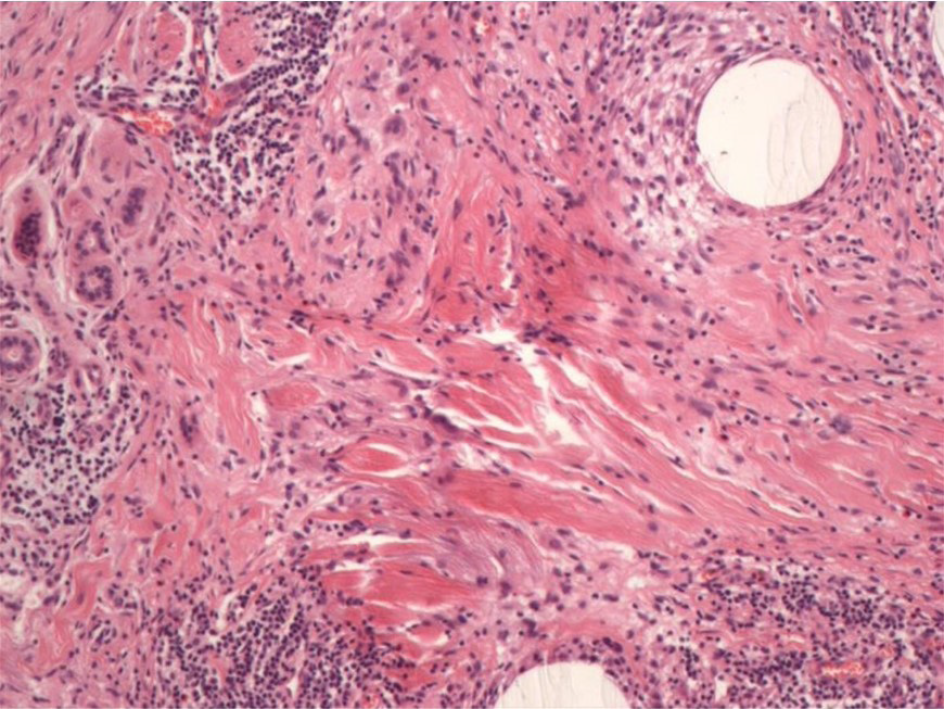Copyright
©The Author(s) 2021.
World J Clin Cases. Jan 26, 2021; 9(3): 607-613
Published online Jan 26, 2021. doi: 10.12998/wjcc.v9.i3.607
Published online Jan 26, 2021. doi: 10.12998/wjcc.v9.i3.607
Figure 1 Pre-operative mass appearance and skin flap design.
A: The patient’s facial appearance before surgery. She had undergone resection of a left upper lip tumor at another hospital 1 mo earlier. The pathological diagnosis indicated microcystic adnexal carcinoma with positive lateral and basal margins. The patient was admitted at this time for additional radical surgery. The photograph shows a longitudinal light red surgical scar lateral to the left upper lip with a length of approximately 3 cm; B: Preoperative skin flap design. The lateral subunit of the left upper lip was the targeted region for extended resection. A puzzle-type advancement flap was designed to fit the shape of this region on the left cheek. The triangular areas marked on the upper and lower sides are the dog-ear deformity expected to be repaired during the surgery.
Figure 2 Wound appearance during surgery and wound repair after surgery.
A: Appearance of the wound after extended resection. At this time, frozen sections showed negative results for all resection margins and the basal area; B: Immediate appearance of the facial reconstruction after the cat ear deformity was repaired with the advancement flap.
Figure 3 Postoperative paraffin-embedded sections confirmed the diagnosis of microcystic adnexal carcinoma (red arrow) with negative resection margins.
Tubercles were observed in microcystic adnexal carcinoma whose cells were observed as cords, cell clusters and glandular structures, with significant atypia.
Figure 4 Appearance during the follow-up.
A: The patient’s facial appearance at the 1-mo follow-up after surgery; B: The patient’s facial appearance at the 1-year follow-up after surgery. The surgical incision healed well without obvious scarring. The bilateral nasolabial folds and philtrum were essentially symmetrical and exhibited good facial sensation and movement function.
- Citation: Xiao YD, Zhang MZ, Zeng A. Facial microcystic adnexal carcinoma — treatment with a “jigsaw puzzle” advancement flap and immediate esthetic reconstruction: A case report. World J Clin Cases 2021; 9(3): 607-613
- URL: https://www.wjgnet.com/2307-8960/full/v9/i3/607.htm
- DOI: https://dx.doi.org/10.12998/wjcc.v9.i3.607












